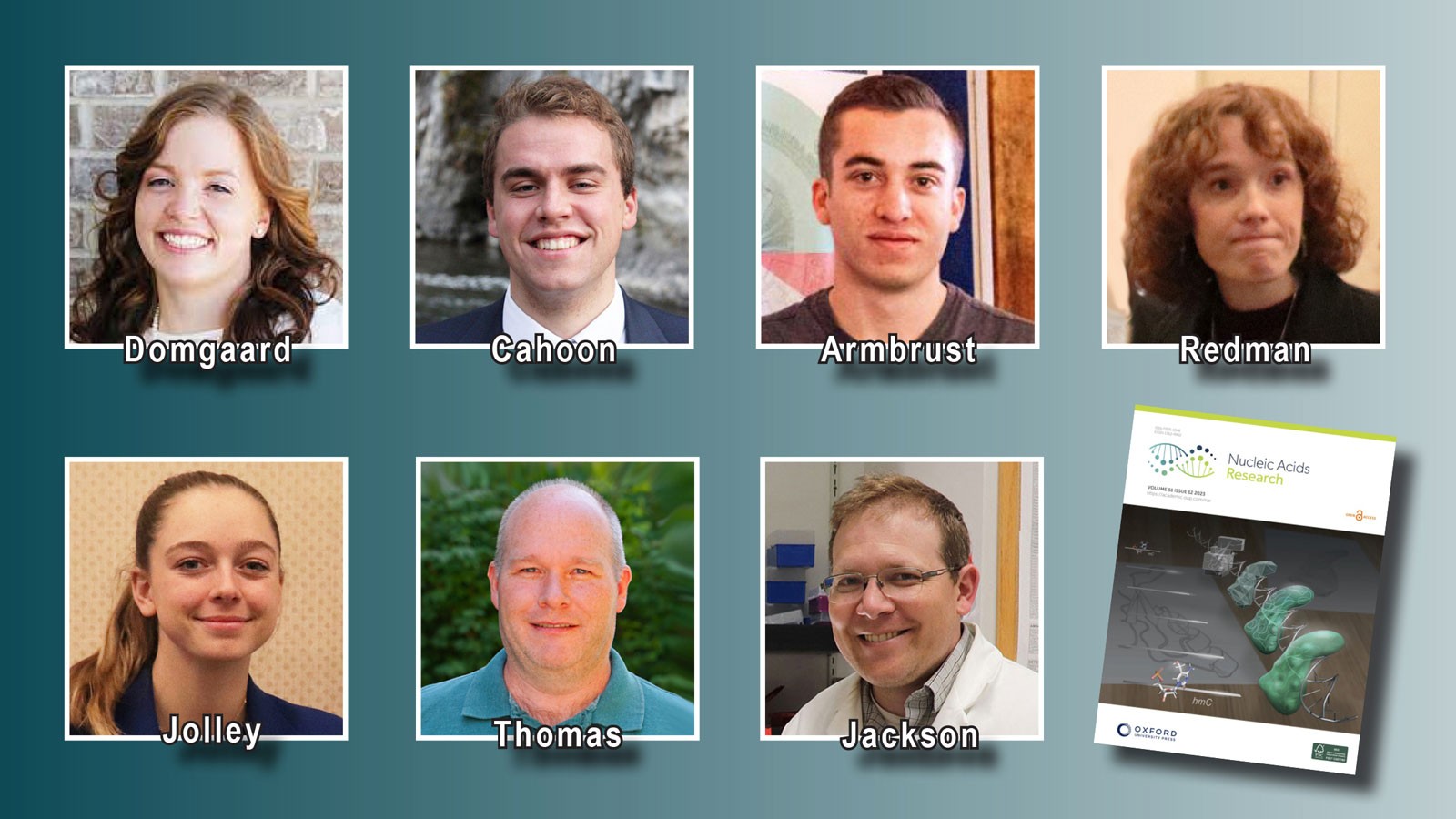A Story to Tell: USU Biochemists Report Findings About Type IV CRISPR Function
Recent USU graduate Hannah Domgaard is lead author on Jackson Lab paper in peer-reviewed journal.
By Mary-Ann Muffoletto |
USU biochemists in faculty member Ryan Jackson's Lab have published findings about a lesser known CRISPR system called Type IV-A in the journal "Nucleic Acids Research."
Utah State University biochemists report a CRISPR-associated protein called CasDinG is essential to type IV-A CRISPR function.
What does that mean? It means Aggie scientists have added another significant contribution to rapidly expanding knowledge of bacterial immune systems known as CRISPR-Cas systems, or Clustered Regularly Interspaced Short Palindromic Repeats.
Type IV-A CRISPR is one of six known CRISPR system types, but less understood than its more famous counterpart CRISPR/Cas9, which has garnered headlines with its genome-editing abilities. The USU scientists’ discovery provides new insight into what makes the enigmatic type IV-A tick.
In a paper published July 3, 2023, in Nucleic Acids Research, Aggie scholars Hannah Domgaard, Christian Cahoon, Matthew Armbrust, Olivine Redman, Alivia Jolley and their Department of Chemistry and Biochemistry faculty mentor Ryan Jackson, along with USU researcher Aaron Thomas in the Department of Animal, Dairy and Veterinary Sciences, demonstrate how CasDinG enables Type IV-A systems to clear bacteria of invasive nucleic acid by acting as a helicase.
The team’s research is supported by the U.S. Department of Health & Human Services National Institutes of Health.
“It’s a really cool finding and gratifying to know we’ve helped to move the field forward,” says lead author Domgaard, who completed master’s and bachelor’s degrees from USU in 2022 and 2017, respectively. “When the Jackson Lab started studying Type IV-A systems in 2016, not much was known about them. With each new immune system and each new discovery, we’re gradually discovering potentially new tools.”
Domgaard says CasDinG, a protein naturally occurring in the common, gram-negative Pseudomonas aeruginosa strain 83 bacterium, enables Type IV-A systems to unwind double-stranded DNA targets and protect cells from the DNA of invasive pathogens.
Using X-ray crystallography, the USU team managed the tricky task of capturing a 3-dimensional molecular structure of CasDinG.
“This was a real challenge,” Domgaard says. “It’s very difficult to capture a crystal.”
She describes spending hours in the lab — from 6 a.m. to midnight — patiently and persistently pursuing an elusive crystal to study.
“It was very exciting when we were able to capture a usable sample,” Domgaard says. “Our paper is definitely a labor of love, with an important story to tell.”
Jackson notes the paper’s authors are primarily undergraduate researchers or researchers who started in his lab as undergrads and progressed to graduate studies.
“That’s a notable accomplishment at this level of research,” says the associate professor. “These are outstanding student researchers.”
Domgaard agrees and acknowledges Jackson’s contributions as well.
“Dr. Jackson is a phenomenal mentor,” she says. “He encourages his students, patiently teaches and guides them, and elevates our efforts to the next level. It was an amazing opportunity and privilege to work in his lab.”
WRITER
Mary-Ann Muffoletto
Public Relations Specialist
College of Science
435-797-3517
maryann.muffoletto@usu.edu
CONTACT
Ryan Jackson
Assistant Professor
Department of Chemistry and Biochemistry
435-797-1635
ryan.jackson@usu.edu
TOPICS
Research 878stories Biology 165stories STEM 163stories Undergraduate Research 157storiesComments and questions regarding this article may be directed to the contact person listed on this page.







